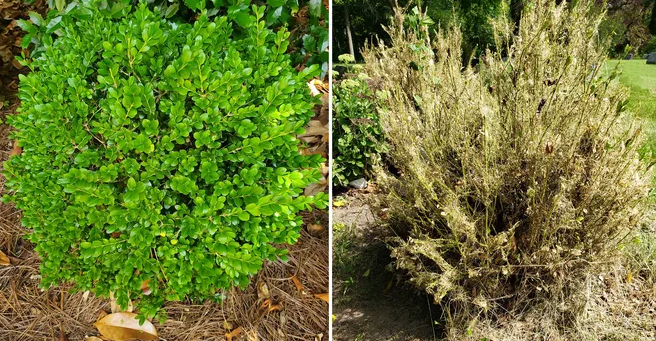Greater Cincinnati's gardening weather year in review

On this New Year's Eve, I thought it might be kind of fun to look back at the year from a gardening weather perspective.
The most impactful event to affect our landscape in 2023 started on Thursday, Dec. 22, in 2022. At 7 p.m. on this Thursday evening, the temperature was 44 degrees at the airport. By 1 a.m. on Friday, Dec. 23, the temperature had fallen to 5 degrees. This was a 39-degree drop in six hours.
Meteorologists call this a "Bomb Cyclone." This set the record for the largest drop in temperature in a six-hour period. We would also go on to set the record for a 12-hour period when the temperature bottomed out -8 degrees at 7 a.m.
Now that Ohio has been changed on the climate map, southern Ohio is in zone 6b. In zone 6b, the average coldest temperatures range from -5 to 0 degrees. On the night of the Bomb Cyclone, it was well below the average coldest temperature.
This drop in temperature caused severe damage to many plants in our landscapes. Most vulnerable were evergreens. The damage was so severe because of the speed of the temperature drop, 52 degrees in 12 hours. The plants simply were not ready for it. They didn’t have time to be acclimated to the cold temperatures.
Without a doubt, boxwood plants suffered the most damage. This is because boxwoods were hit with a one-two punch. The first punch was the cold, and the second was insects that they are vulnerable to and infected with in most years. These are the Psyllids and Leaf Miners. When the plants are healthy and strong, they can sustain damage from these insects. Not this past season. Most of the plants were damaged by the cold, and the insects killed anything that was left.
If your boxwoods survived this extreme weather, you can protect them from the insect damage by treating them with a root drench with a systemic insecticide. This should be done in March.
Of course, success in gardening is extremely dependent upon the weather conditions. Most of 2023 was average as weather goes. The problem and challenge we have in southwest Ohio is our weather has a pattern of coming in extremes. We always have the potential for both extreme cold as well as extreme heat. Our goal is to be average by the end of the year.
After the Bomb Cyclone, the growing season was really good. I think this was an example of nature working to take care of itself. Spring was very mild, with very few late frosts. We had normal rainfall. This all worked well to help the damaged plants recover when and where they could.
The weather started to run very dry in late July. This was the beginning of a drought that lasted into October. This put some stress on our lawns. Our fall fertilizing schedule was challenged because the soil was so dry. After the middle of October, we finally started getting some good rain.
After the rain, the lawns looked as good as they had all year. Then with the mild weather, they kept growing. When I used my mower to clean up leaves, I was still cutting grass in the early days of this month.
I would like to wish everyone a Happy New Year. Let’s hope the rest of the winter is mild so we can get back out to our gardens soon. Let’s hope for an early spring. Before you know it you will be seeing some crocus starting to pop, and then you will know it’s time to start cleaning your trowel. Planting season is coming.
This article originally appeared on Cincinnati Enquirer: Greater Cincinnati's gardening weather year in review

